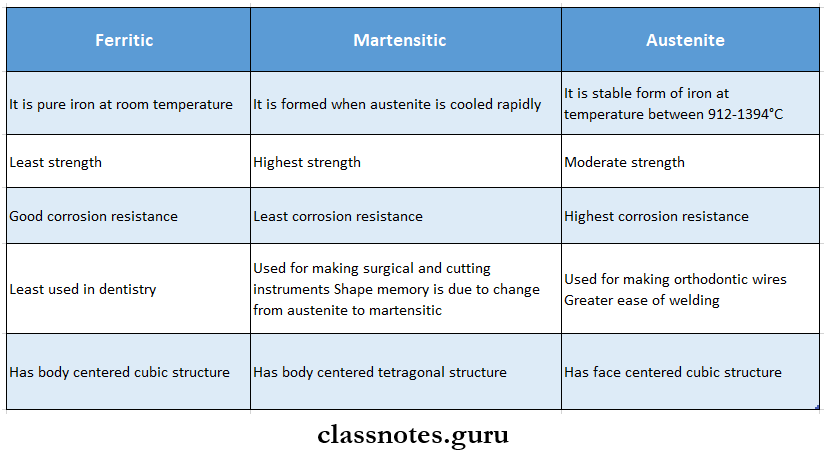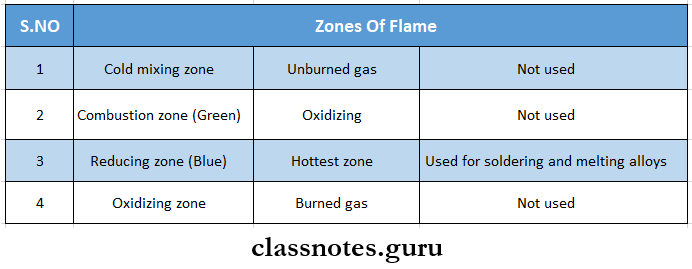Wrought Alloys Important Notes
1. Stainless Steel.
- Austenitic stainless steel
- Use – To make orthodontic archwires
Stainless Steel Properties:
- Adequate strength
- Adequate spring back
- Resilience
- Formability
- Biocompatible
- Economical
2. Alloys And Their Constituents
- Elgiloy-cobalt-chromium-nickel
- Beta titanium – titanium – molybdenum – aluminum
- Nitinol-nickel-titanium
- Titanium alloys – titanium – aluminum – vanadium

Wrought Alloys Short Essays
Question 1. Ni-Ti orthodontic wire.
Answer:
Ni-Ti orthodontic wire
- Synonym – Nitinol (Nickel Titanium Naval Ordinance Laboratory)
- Inventor – William R. Buchler
- Introduced by – Andersen in 1971
Nickel Titanium Alloy Properties:
- Super elasticity
- Shape memory
- High spring back
- High working range
- Low stiffness
Read And Learn More: Dental Materials Question and Answers
Ni-Ti orthodontic wire Advantages or Nickel Titanium Alloy Properties:
Produce low and more constant force on teeth
Ni-Ti orthodontic wire Disadvantages or Nickel Titanium Alloy Properties:
- Cannot be bent
- Cannot be soldered or welded
Wrought Alloys In Dentistry
Question 2. Types of Stainless Steel.
Answer:
Types of Stainless Steel
- Types of stainless steel are
- Ferritic stainless steel
- Austenitic stainless steel
- Martensitic stainless steel
Sensitization Of Stainless Steel

Wrought Alloys Short Question And Answers
Question 1. Stages of annealing heat treatment.
Answer:
Stages Of Annealing Heat Treatment

Dental Wrought Alloys
Question 2. Zones of flame.
Answer:
Zones Of Flame

Examples Of Wrought Alloys
Question 3. Sensitization of 18-8 stainless steel.
Answer:
Sensitization Of 18-8 Stainless Steel
- At 400-900°C, stainless steel resists corrosion and tarnish
- At lower temperatures, carbon reacts with the surface granules and forms chromium iron carbide causing tarnish and corrosion
- This can be prevented by decreasing carbon content or by cold working of stainless steel.
